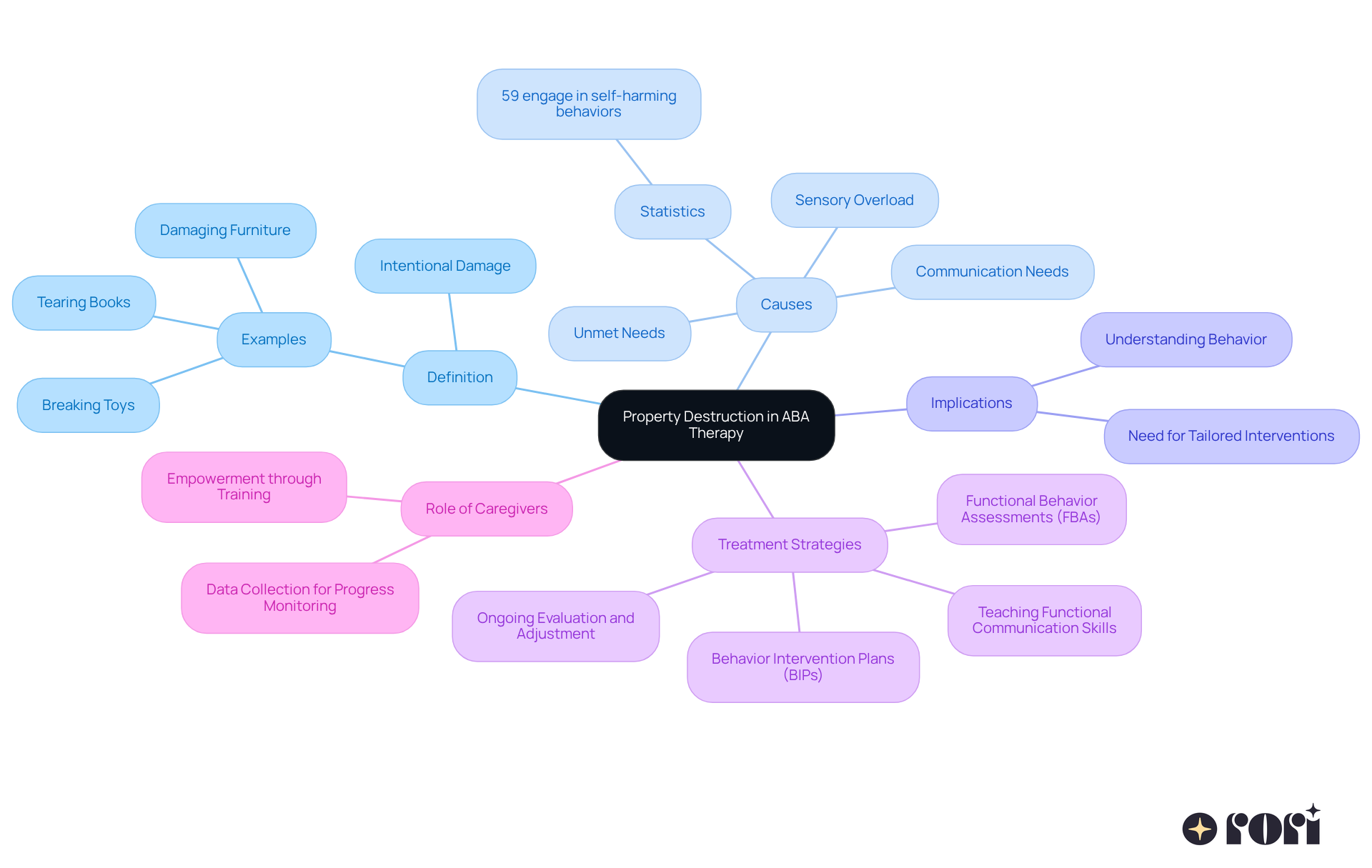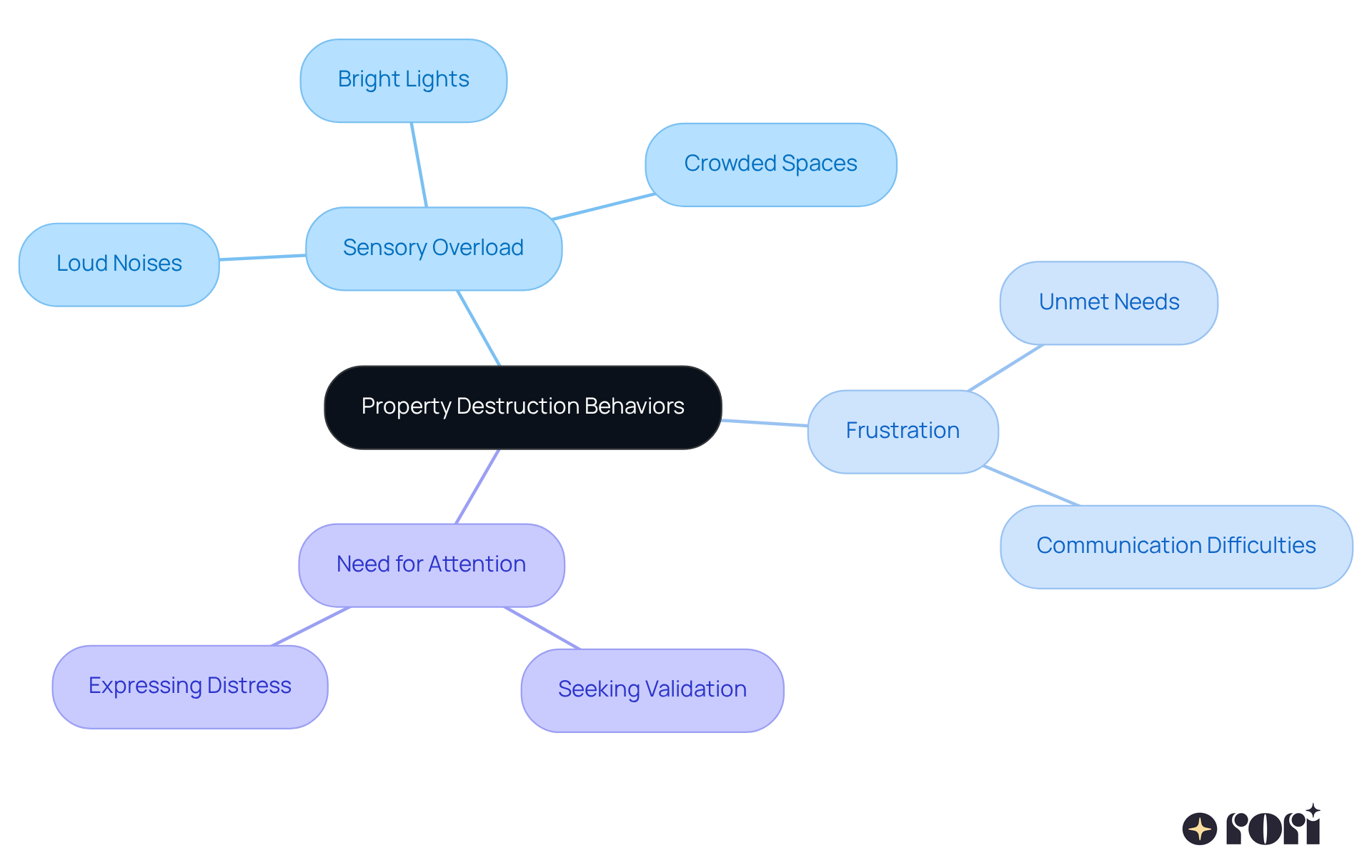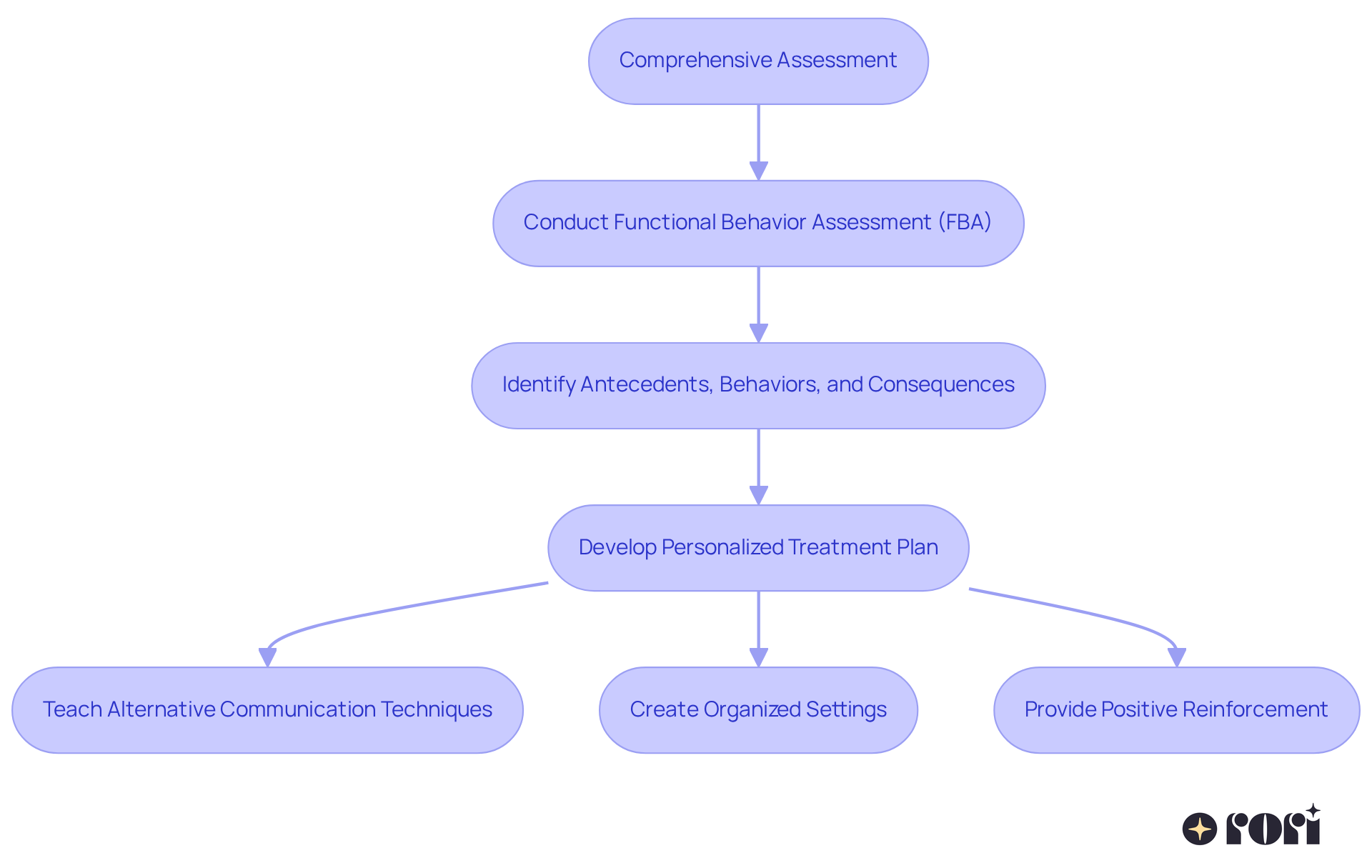This article dives into the topic of property destruction within the realm of ABA therapy, highlighting how these behaviors can often act as a form of communication for children with autism. By recognizing the underlying causes—like sensory overload or unmet needs—parents can tailor interventions that not only promote healthier coping mechanisms but also enhance communication skills.
Understanding these behaviors is crucial! For instance, when a child feels overwhelmed, they may express it through destructive actions. By identifying what triggers these moments, parents can create a supportive environment that fosters better communication and understanding.
Let’s explore this together! With the right approach, we can help our children express their needs in more positive ways. Remember, you’re not alone in this journey; many parents face similar challenges and find success through tailored strategies.
We’re here to help you every step of the way! By focusing on the root causes and implementing supportive interventions, we can pave the way for healthier emotional expression and improved interactions.
Understanding property destruction in the context of Applied Behavior Analysis (ABA) therapy is so important for parents like you who are navigating the complexities of your child's behavior. This behavior often serves as a way for children with autism to communicate, revealing their underlying needs or frustrations instead of just being acts of defiance. As families work through the implications of these destructive actions, the real challenge is figuring out what’s behind them and how to implement effective interventions.
So, what strategies can you use to turn these behaviors into opportunities for growth and better communication? Let’s explore this together! By recognizing that these actions can signal unmet needs, you can start to address them in a way that fosters understanding and connection. We’re here to help you every step of the way!
In the realm of Applied Behavior Analysis (ABA), the property destruction definition aba refers to actions that intentionally damage materials, objects, or surfaces in a young person's environment. Think about instances like breaking toys, tearing books, or damaging furniture. Recognizing this behavior is really important, as it often serves as a way for children with autism to communicate their needs or frustrations, especially when they struggle with verbal expression. For example, a child might destroy a toy not out of anger but as a way to express distress or to seek attention.
Understanding how often property damage occurs is key; research indicates that about 59% of individuals with autism engage in self-harming behaviors, aggression, or vandalism at some point in their lives. By acknowledging the property destruction definition aba as a significant behavior, clinicians can conduct thorough evaluations to uncover its underlying causes, like sensory overload or unmet needs. This insight allows for the development of tailored interventions that address the core issues rather than just the symptoms.
Analysts stress that effective treatment hinges on viewing these actions as forms of communication, which can pave the way for more meaningful and supportive strategies in ABA therapy. At Rori Care, our personalized planning ensures that each strategy is uniquely designed to meet your child's specific needs, setting clear, measurable goals for change and skill development. Plus, our ongoing evaluation and adjustment process means we keep a close eye on your child's progress, ensuring that interventions stay effective.
It's also crucial to understand the challenges families face in accessing effective treatments for harmful behaviors, which can make implementing these strategies more complicated. Empowering caregivers with ABA principles and strategies to support youth behavioral goals through active involvement and data collection is essential for enhancing support and improving outcomes. Additionally, qualified behavior analysts play a vital role in crafting these personalized plans, using functional behavior analysis to assess actions and generate automatic progress reports for clinician review.
Let’s explore this together! We’re here to help you every step of the way!

Destructive behaviors in youngsters often stem from various contextual influences, like sensory overload, frustration, and the need for attention. For example, when a child is bombarded with loud noises, bright lights, or crowded spaces, they might resort to destructive actions as a way to cope with their discomfort. This can also happen when their needs aren't met or when they find it hard to communicate effectively.
Frustration is a significant trigger for what the property destruction definition ABA describes. Kids may show their struggle to handle overwhelming situations through these actions. Understanding these contexts is so important for parents. It helps them approach the behavior with empathy. Recognizing that the property destruction definition ABA can signal a child's distress or need for support allows parents to implement more effective intervention strategies. This ultimately leads to healthier communication and coping mechanisms.
Equipping caregivers with ABA principles and strategies enhances their ability to support their child’s behavioral goals. By actively participating in their child's therapy and understanding the reasons behind behaviors like property damage, caregivers can make informed choices that positively impact their child's progress and family dynamics.
To support this journey, Rori Care offers a FREE Autism Consultation. This provides parents with valuable insights and guidance tailored to their child's unique needs. Let’s explore this together!

To effectively tackle the property destruction definition aba, it’s crucial to start with a comprehensive assessment. This often means conducting a Functional Behavior Assessment (FBA) to pinpoint the antecedents, behaviors, and consequences tied to those destructive actions. With a plan developed by a BCBA, therapists work alongside the youth to uncover these underlying causes, paving the way for tailored intervention strategies.
These strategies might include:
By embracing these strategies, parents can foster a more nurturing environment that encourages positive behavior and lessens the likelihood of harmful actions.
Board Certified Behavior Analysts (BCBAs) emphasize the importance of personalized treatment plans. They highlight that adjustments to interventions should be thoughtful and responsive to the individual’s evolving needs. Additionally, our behavior care engine conducts functional behavior analysis for target behaviors and skills, generating automatic progress reports for clinicians to review. This empowers caregivers with valuable data to support their child’s behavioral goals.
This approach not only addresses the property destruction definition aba but also nurtures overall development and communication skills in children with autism. Let’s explore this together! We're here to help you every step of the way!

Understanding property destruction in the context of ABA therapy is essential for recognizing its role as a form of communication for children with autism. Often, this behavior stems from unmet needs or overwhelming situations. By interpreting these actions with empathy, caregivers and practitioners can see property destruction not merely as a challenge but as a chance for deeper understanding. This perspective can help families foster healthier communication and develop more effective intervention strategies.
Throughout this journey, the importance of comprehensive assessments and tailored intervention strategies shines through. Techniques like Functional Behavior Assessments and alternative communication methods aim to tackle the root causes of property destruction while encouraging positive behaviors. Plus, qualified behavior analysts play a vital role in crafting personalized plans that adapt to each child's unique needs, ensuring that interventions remain effective and supportive.
Ultimately, addressing property destruction in ABA therapy goes beyond just mitigating harmful behaviors; it’s about empowering families and enhancing the developmental journey of children with autism. By engaging with ABA principles and seeking guidance, caregivers can create nurturing environments that promote positive behavior and improve family dynamics. Embracing this understanding can lead to meaningful progress—so let’s explore available resources and support systems together! We’re here to help you every step of the way!
What is property destruction in the context of ABA therapy?
Property destruction in ABA therapy refers to intentional actions that damage materials, objects, or surfaces in a young person's environment, such as breaking toys, tearing books, or damaging furniture.
Why do children with autism engage in property destruction?
Children with autism may engage in property destruction as a way to communicate their needs or frustrations, particularly when they have difficulty with verbal expression. For example, a child might destroy a toy not out of anger but to express distress or seek attention.
How common is property destruction among individuals with autism?
Research indicates that about 59% of individuals with autism engage in self-harming behaviors, aggression, or vandalism at some point in their lives.
How can understanding property destruction help in ABA therapy?
Recognizing property destruction as a significant behavior allows clinicians to conduct thorough evaluations to uncover its underlying causes, such as sensory overload or unmet needs, leading to tailored interventions that address core issues rather than just symptoms.
What is the approach of Rori Care in addressing property destruction?
Rori Care emphasizes personalized planning to create unique strategies designed to meet each child's specific needs, setting clear and measurable goals for change and skill development, along with ongoing evaluation and adjustment of interventions.
What challenges do families face in accessing effective treatments for harmful behaviors?
Families may encounter difficulties in accessing effective treatments for harmful behaviors, which can complicate the implementation of strategies aimed at addressing property destruction and other issues.
How can caregivers support youth behavioral goals in ABA therapy?
Caregivers can enhance support and improve outcomes by being empowered with ABA principles and strategies, actively involving themselves in the process, and participating in data collection.
What role do qualified behavior analysts play in ABA therapy?
Qualified behavior analysts are essential in crafting personalized plans using functional behavior analysis to assess actions and generate automatic progress reports for clinician review.